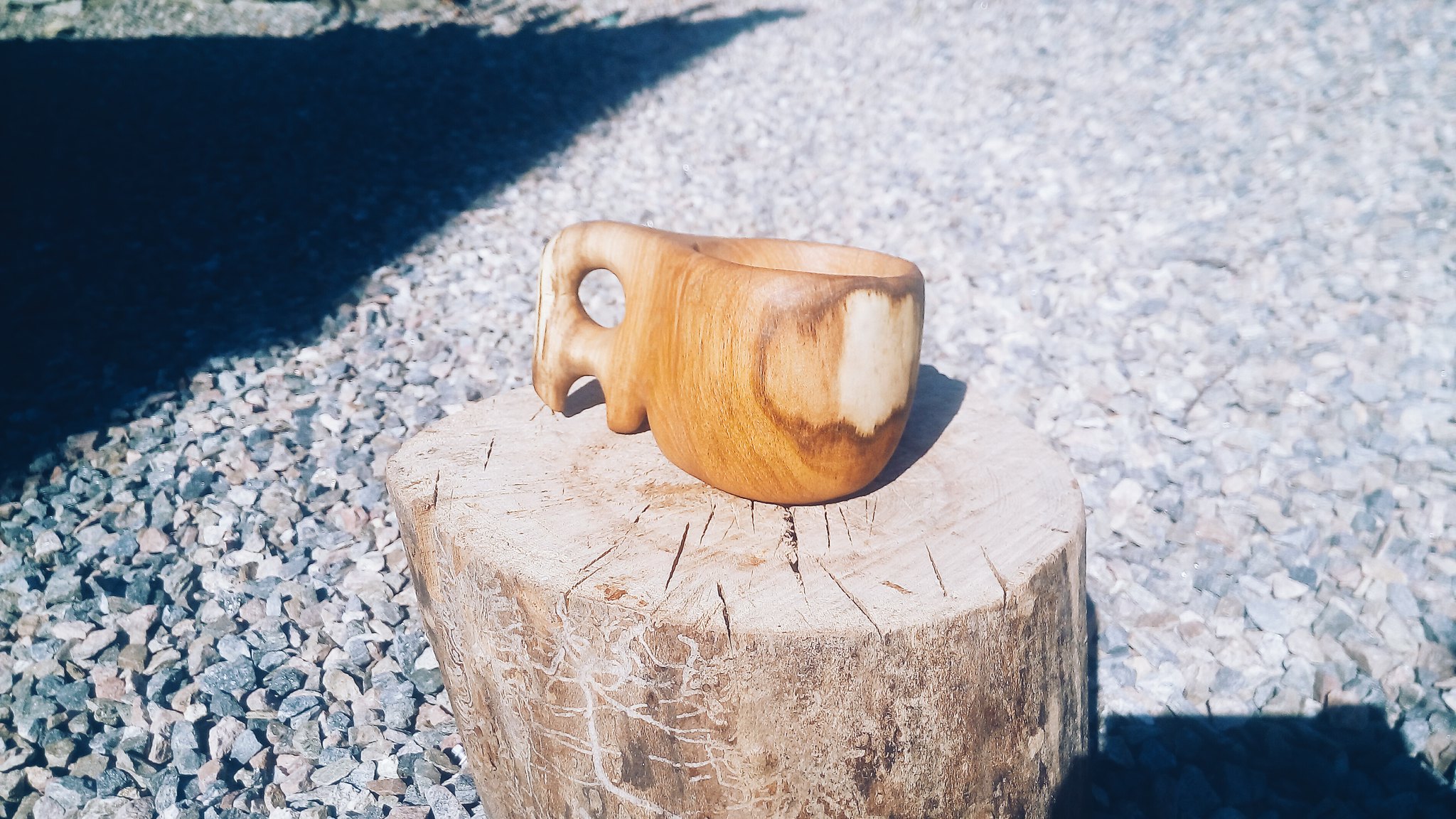
So I've carved plenty of spoons and other things before but have never done a kuksa but I've always really liked them. About a month ago I moved to Scottish Highlands so basically I can get as much wood as I can carry for free and this is what finally pushed me over the edge. I'm not really sure what type of wood it is but maybe a type of cherry? Not really sure but there's lots of it around here along side birch and a few other species. Also the piece I had there is a white spot on the front that seemed to go too deep in the wood to carve out.
Anyway I carved the blank and basic shape with my Brades Criterion hatchet, then refined it with a small mora carving knife and carved the bowl/holes with a flexcut carving jack. The carving jack tools were quite small so it took quite a while to carve I obviously need so proper bigger tools.
So yeah it's not a great looker but for my first I'm decently happy.
Thanks.
